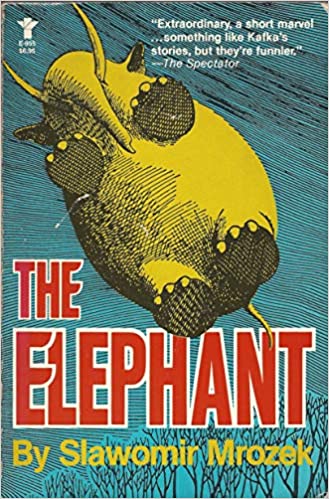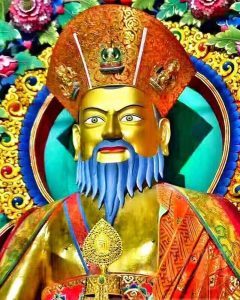Unit Three-Chapter Three Development of Health Services
Introduction
·
Bhutan
assumed a variety of names in the olden days like: Menjong Norbuiling and
Menjong Gyalkhab as there were many medicinal plants.
·
Bhutan
before the introduction of the modern medicine and the health care system
solely relied on its traditional system of healing known as Sowa-Rigpa.
·
The
indigenous treatment practices were introduced by Tenzin Drugda, an esteemed physician
and the minister of Religion of Zhabdrung Ngawang Namgyal.
·
Today,
from a traditional agrarian society, Bhutan embarked upon the road to
modernization in the early sixties with the starting of the First Five Year
Plan and with it modern health services were introduced. However both the
health services complement one another to respond to the need of the public.
Traditional medicine
Development of Traditional Medicine in Bhutan
·
16the
Century- Bhutanese were sent to Tibet to study medicine and shared a principal
of reciprocity between the two
·
Bhutanese
supplied the medicinal plant and the Tibetan schools trained the Bhutanese
doctors
·
Later
over the centuries Bhutan developed its own peculiarities which may not be
necessarily found in ancient Tibetan practices.(Sowa Rigpa)
·
The
Dzongs became the centers for most trained Doctor’s to practice their art
employing one or two physicians privately.
·
1967-
Traditional medicine service was formalized as a part of the national health
care delivery system.
·
1979-the
dispensary was upgraded to national Indigenous Hospital and shifted to the
present site in Kawang Jangsa
·
1982-
WHO contributed pharmaceutical machines
·
1997-
European Commission project helped by contributing research unit and
pharmaceutical unit
·
1998-
National Institute of Traditional medicine (earlier known as Indigenous
medicine unit) was set up
·
NITM
was upgraded and was categorize as
1. National
Traditional Medicine Hospital ( responsible for the development and provision of traditional medical
Care)
2. National
Institute of Traditional medicine (Responsible for development of human resources for traditional
medical services.)
3. Pharmaceutical
and research unit (Responsible
for the Production and quality control and research)
Policy objectives for Traditional Medicine
ü Preserve the unique culture and tradition
related to medical practices.
ü Promote and strengthen traditional medical
system in the country
ü Provide alternative medicine as complimentary
to the allopathic system
ü Produce medicines required by the traditional
medicine system
ü Conduct research and quality control of drugs
ü Develop human resources for traditional
medical services
Traditional
Medical Services
ü The medical services is available in all the
20 Dzongkhags as an integral part of the national health delivery system
ü The Dzongkhag traditional medicine service has
one Drungtsho and one Menpa
ü To enhance mutual consultation, treatment and
cross referral of patients, the traditional medicine service is also housed in
Dzongkhag hospital.
Production of Traditional medicines
ü The Pharmaceutical and Research unit
manufactures traditional medicines and conducts scientific research for quality
enhancement of medicine.
ü The traditional medicine in Bhutan is purely
an indigenous product as most of raw materials as well as the processing
process are purely available in the country.
ü The unit maintains rapport with the green
sectors like National Conservation Division, national parks, Bio-Diversity
programme and the RNR RCs in the Ministry of Agriculture of Bhutan as it uses
medicinal plants and other natural resources.
ü The unit also keeps link with the farmers and
the local communities to ensure sustainable collection and harvesting.
ü Sowa Rigpa prescribes the use of more than
2990 different types of raw materials, the ITMS uses about 265 different types
to produce 103 compounds that constitute an essential list of traditional
medicines.
ü About 85% of raw materials are available
within the country and the remaining 15% are imported from India. The raw
materials are classified into:
§ Ngo men- High Altitude medicinal plants
§ Throg men- Low altitude medicinal plants
§ Sa men- Mineral Origin
§ Sogcha men- Animal origin
ü All the medicines are prepared manually
ü 1982- The small scale mechanized production
was started with the support from WHO.
ü 1998- The manufacturing unit was upgraded with
the EC funding. Emphasizing on the quality control.
Allopathic Medicine
Development of Allopathic Medicine in Bhutan
ü It was formally introduced in Bhutan during
the First Five Year Plan with the initiative of king Jigme Dorji Wangchuk, the
third king of Bhutan.
ü However, even before 1961, a number of Bhutanese
were sent to India to be trained as paramedical worker.
ü Thereafter, several Bhutanese Licentiate physicians,
who were trained in India provided services in Thimphu and Paro in their own
capacity primarily as royal physicians.
Dr. Tashi Tobgyal was the first physician
1952- He was sent for MBBS
1954- He became the first Bhutanese MBBS
doctor
ü 1956- Planned health service was set up after
Langjophaka hospital was opened
ü 1960- Department of health services was
introduced
ü 1961- Thimphu Hospital was started
ü 1980- Real infrastructure began emphasizing on
the primary health care approach, which was propounded at the Alma Ata
Declaration in 1978, to which Bhutan is a signatory.
ü 1774, RIHS was established to train the
Bhutanese paramedical personnel within the country and marked an important step
in the development of self-reliance in health manpower for the country.
ü 1984- Bhutan joined the WHO and became another
landmark services in the health.
Policy objectives of the Health Sector for the Ninth Five Year Plan
ü The main objectives of the health Sector for
the Ninth Five Year plan are:
ü Enhance the quality of health services
ü Target the health services to reach the unreached
ü Enhance self-reliance and sustainability of
health services
ü Intensify human resource development for
health and establish a system of continuing education
ü Intensify reproductive health services and
sustain population planning activities
ü Intensify the prevention and control of
prevailing health problems and the emerging and re-emerging ones.
ü 1980s-The most common diseases were identified
which were caused by Water borne parasites mainly resulting from the lack of
clean drinking water.
ü The government targeted to control the water
borne diseases by 2000 and eliminate waterborne diseases like diarrhea and
dysentery, malaria, TB, Pneumonia and goiter.
Some of the programmes to prevent disease are:
-
Expanded
Programme on Immunization
-
National
STD/AIDs prevention and control Programme
-
National
TB Control Programme
-
National
Malaria Control Programme
-
Acute
Respiratory Infections Control Programme
-
National
Control of Diarrhoeal Disease Programme
-
Leprosy
Control Programme
-
Primary
Eye Care Programme









0 Comments